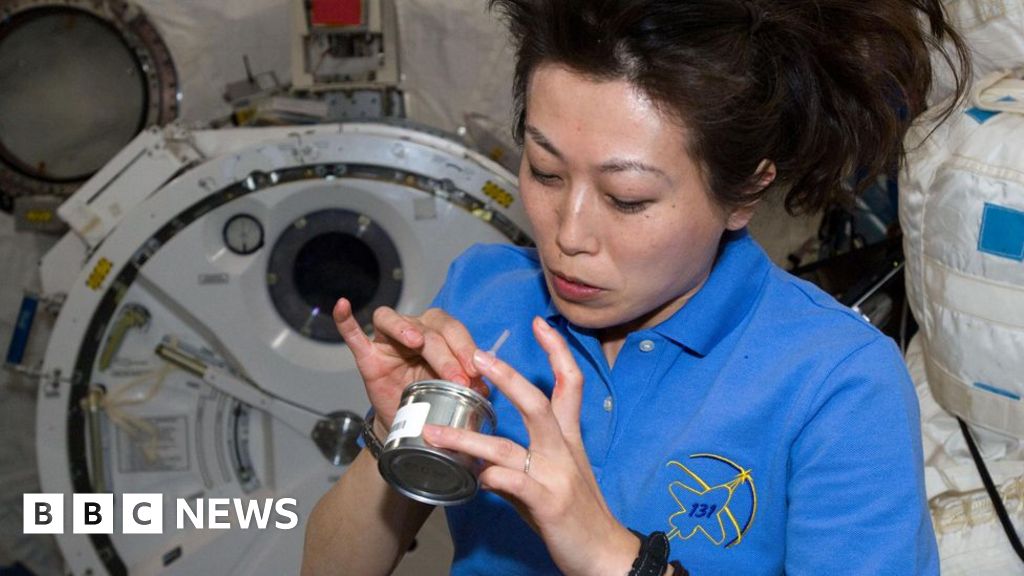
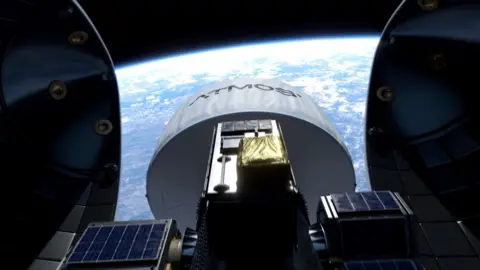 Frontier Space
Frontier SpaceSteak, mashed potatoes and desserts for astronauts could soon be grown from individual cells in space if an experiment launched into orbit today is successful.
A European Space Agency (ESA) project is assessing the viability of growing so-called lab-grown food in the low gravity and higher radiation in orbit and on other worlds.
ESA is funding the research to explore new ways of reducing the cost of feeding an astronaut, which can cost up to £20,000 per day.
The team involved say the experiment is a first step to developing a small pilot food production plant on the International Space Station in two years’ time.
Lab-grown food will be essential if Nasa’s objective of making humanity a multi-planetary species were to be realised, claims Dr Aqeel Shamsul, CEO and founder of Bedford-based Frontier Space, which is developing the concept with researchers at Imperial College, London.
“Our dream is to have factories in orbit and on the Moon,” he told BBC News.
“We need to build manufacturing facilities off world if we are to provide the infrastructure to enable humans to live and work in space”.
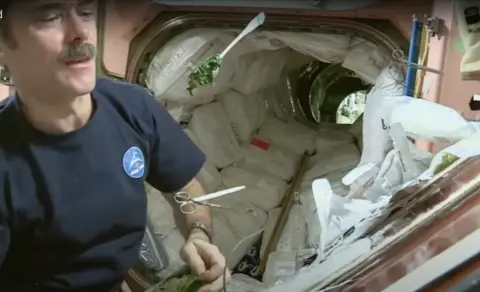 NASA
NASALab-grown food involves growing food ingredients, such as protein, fat and carbohydrates in test tubes and vats and then processing them to make them look and taste like normal food.
Lab-grown chicken is already on sale in the US and Singapore and lab grown steak is awaiting approval in the UK and Israel. On Earth, there are claimed environmental benefits for the technology over traditional agricultural food production methods, such as less land use and reduced greenhouse gas emissions. But in space the primary driver is to reduce costs.
The researchers are doing the experiment because it costs so much to send astronauts food on the ISS – up to £20,000 per astronaut per day, they estimate.
Nasa, other space agencies and private sector firms plan to have a long-term presence on the Moon, in orbiting space stations and maybe one day on Mars. That will mean sending up food for tens and eventually hundreds of astronauts living and working in space – something that would be prohibitively expensive if it were sent up by rockets, according to Dr Shamsul.
Growing food in space would make much more sense, he suggests.
“We could start off simply with protein-enhanced mashed potatoes on to more complex foods which we could put together in space,” he tells me.
“But in the longer term we could put the lab-grown ingredients into a 3D printer and print off whatever you want on the space station, such as a steak!”
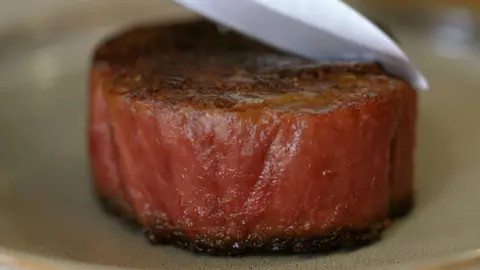
This sounds like the replicator machines on Star Trek, which are able to produce food and drink from pure energy. But it is no longer the stuff of science fiction, says Dr Shamsul.
He showed me a set-up, called a bioreactor, at Imperial College’s Bezos Centre for Sustainable Proteins in west London. It comprised a brick-coloured concoction bubbling away in a test tube. The process is known as precision fermentation, which is like the fermentation used to make beer, but different: “precision” is a rebranding word for genetically engineered.
In this case a gene has been added to yeast to produce extra vitamins, but all sorts of ingredients can be produced in this way, according to Dr Rodrigo Ledesma-Amaro, Director of the Bezos Centre.
“We can make all the elements to make food,” says Dr Ledesma-Amaro proudly.
“We can make proteins, fats, carbohydrates, fibres and they can be combined to make different dishes.”
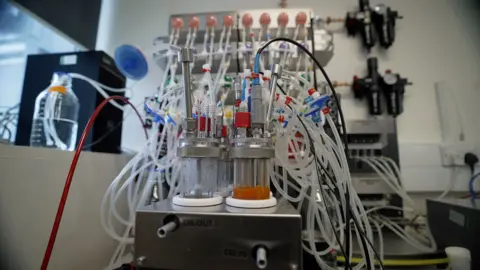
A much smaller, simpler version of the biorector has been sent into space on a SpaceX Falcon 9 rocket as part of the ESA mission. There is plenty of evidence that foods can be successfully grown from cells on Earth, but can the process be repeated in the weightlessness and higher radiation of space?
Drs Ledesma-Amaro and Shamsul have sent small amounts of the yeast concoction to orbit the Earth in a small cube satellite on board Europe’s first commercial returnable spacecraft, Phoenix. If all goes to plan, it will orbit the Earth for around three hours before falling back to Earth off the coast of Portugal. The experiment will be retrieved by a recovery vessel and sent back to the lab in London to be examined.
The data they gather will inform the construction of a larger, better bioreactor which the scientists will send into space next year, according to Dr Ledesma-Amaro.
The problem, though, is that the brick-coloured goo, which is dried into a powder, looks distinctly unappetising – even less appetising than the freeze-dried fare that astronauts currently have to put up with.
That is where Imperial College’s master chef comes in. Jakub Radzikowski is the culinary education designer tasked with turning chemistry into cuisine.
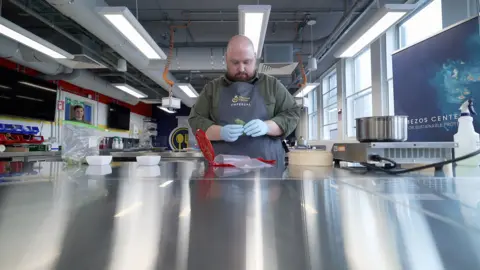 Kevin Church
Kevin ChurchHe isn’t allowed to use lab grown ingredients to make dishes for people just yet, because regulatory approval is still pending. But he’s getting a head start. For now, instead of lab-grown ingredients, Jakub is using starches and proteins from naturally occurring fungi to develop his recipes. He tells me all sorts of dishes will be possible, once he gets the go-ahead to use lab-grown ingredients.
“We want to create food that is familiar to astronauts who are from different parts of the world so that it can provide comfort.
“We can create anything from French, Chinese, Indian. It will be possible to replicate any kind of cuisine in space.”
Today, Jakub is trying out a new recipe of spicy dumplings and dipping sauce. He tells me that I am allowed to try them out, but taster-in-chief is someone far more qualified: Helen Sharman, the UK’s first astronaut, who also has a PhD in chemistry.
 Kevin Church/BBC News
Kevin Church/BBC NewsWe tasted the steaming dumplings together.
My view: “They are absolutely gorgeous!”
Dr Sharman’s expert view, not dissimilar: “You get a really strong blast from the flavour. It is really delicious and very moreish,” she beamed.
“I would love to have had something like this. When I was in space, I had really long-life stuff: tins, freeze dried packets, tubes of stuff. It was fine, but not tasty.”
Dr Sharman’s more important observation was about the science. Lab-grown food, she said, could potentially be better for astronauts, as well as reduce costs to the levels required to make long-term off-world habitation viable.
Research on the ISS has shown that the biochemistry of astronauts’ bodies changes during long duration space missions: their hormone balance and iron levels alter, and they lose calcium from their bones. Astronauts take supplements to compensate, but lab-grown food could in principle be tweaked with the extra ingredients already built in, says Dr Sharman.
“Astronauts tend to lose weight because they are not eating as much because they don’t have the variety and interest in their diet,” she told me.
“So, astronauts might be more open to having something that has been cooked from scratch and a feeling that you are really eating wholesome food.”

Get our flagship newsletter with all the headlines you need to start the day. Sign up here.
